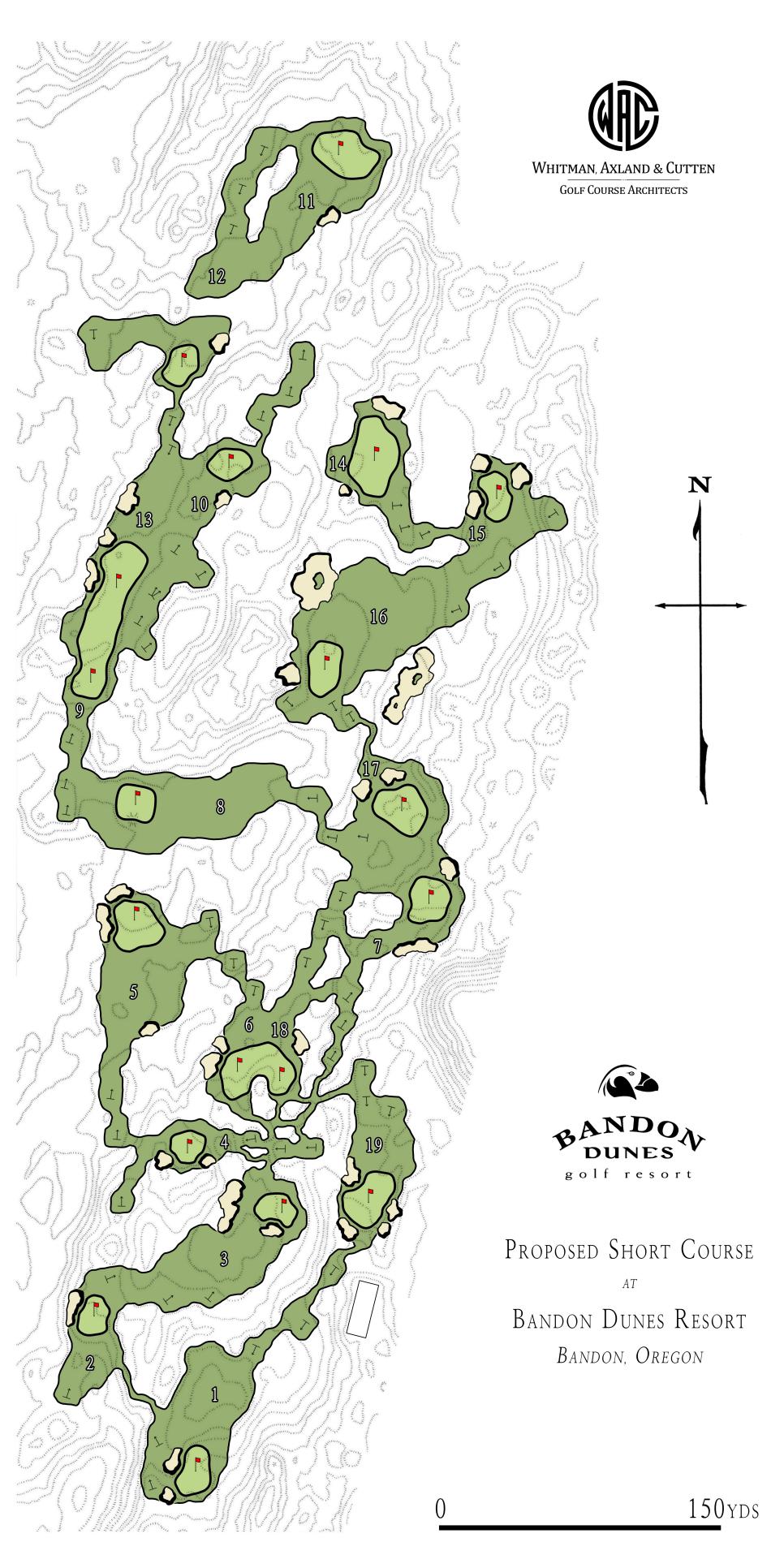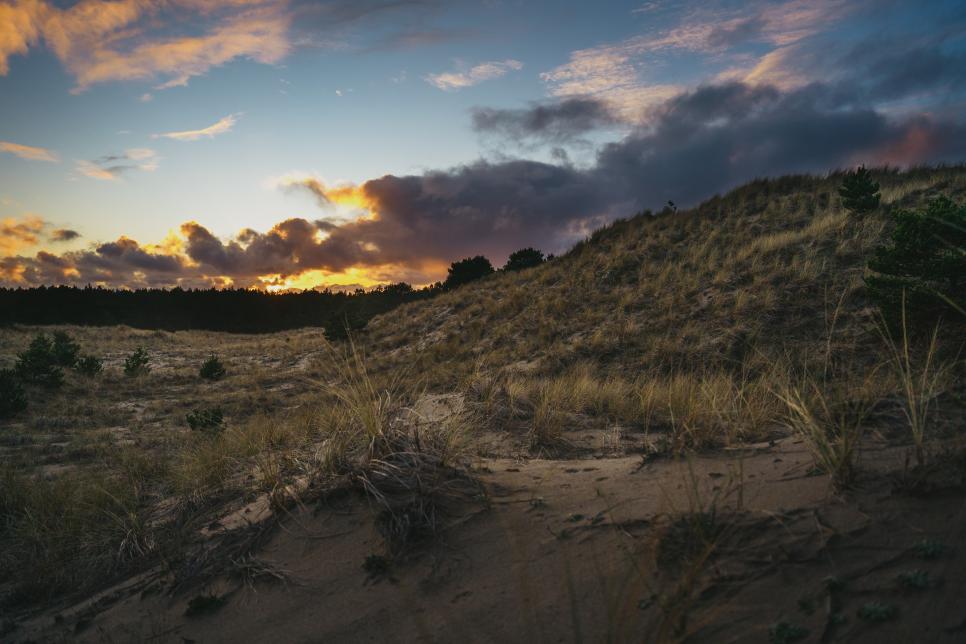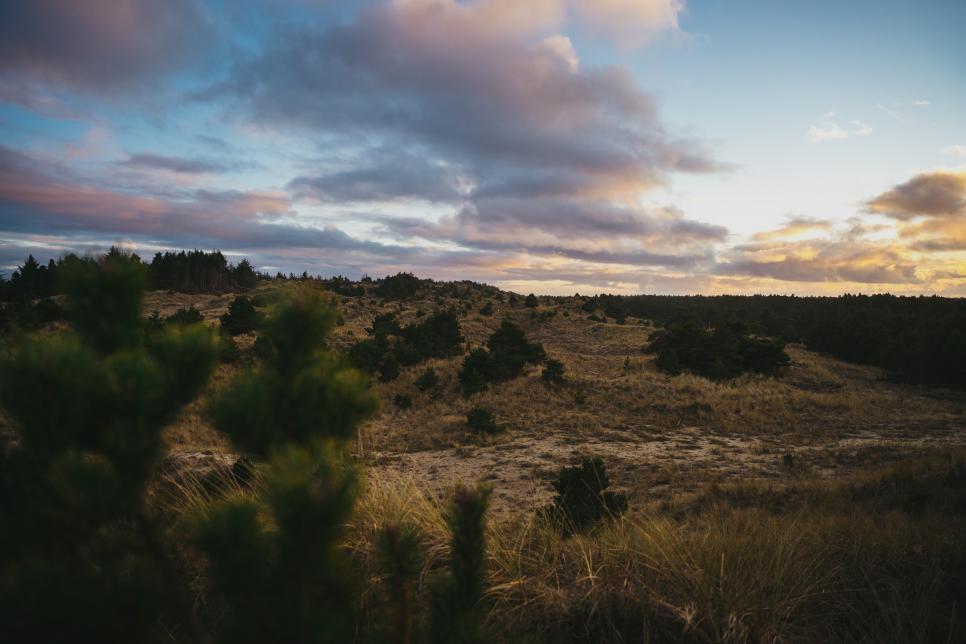For several years now, golf courses across the USA have been bursting at the seams. With demand reaching heights not seen in decades, most clubs and resorts wish they had more inventory to offer. This is especially true at a place like Bandon Dunes, which is already largely booked through October 2024.
To help alleviate pressure and give guests more of what they avidly travel to the south-west Oregon coast to consume, Bandon has announced the construction of a new par-3 course, to be designed by the architecture firm of Whitman, Axland and Cutten (known as WAC). The team will begin pushing sand later this month and hopes to have the course completed by next October.
The yet-to-be-named 19-hole layout will be Bandon’s second short-course option to accompany The Preserve, a rollicking 13-hole course designed by Bill Coore and Ben Crenshaw (and shaped by designer Dave Zinkand) playing through wild coastal dunes with views above the Pacific Ocean. The new course will be the resort’s seventh, along with the original Bandon Dunes, designed by David McLay Kidd in 1999, Pacific Dunes (2001, Tom Doak), Bandon Trails (2005, Coore and Crenshaw), Old Macdonald (2011, Doak and Jim Urbina) and Sheep Ranch (2020, Coore and Crenshaw).
Like The Preserve, the new par-3 course is located west of Bandon Trails in another gorgeous section of dunes – and the 15th green will sit just below Trails’ first green and second tee area.

Bandon Dunes owner Mike Keiser knows Rod Whitman and Dave Axland well – they built Cabot Links in 2011, the first course at Cabot Cape Breton that Keiser developed with partner Ben Cowan-Dewar (Cutten worked on the project as well). Axland has also been a longtime associate with Coore and Crenshaw and helped get their preliminary work started at both Bandon Trails and Sheep Ranch.
Bandon Trails is the lowest-ranked of the four Bandon courses on America’s 100 Greatest, probably because it’s the only one not immediately adjacent to the Pacific coastline. But we consider it such a compelling layout that it needs no seascape to command one’s attention. Bandon Trails starts and finishes in serious sand dunes (the 18th being recently altered by Coore) while the remainder rolls through Oregon forest. Bump-and-run is the name of the game but the structure of each hole requires thoughtful bumps and targeted runs. Its most controversial hole is the short par-4 14th with a thumb of a green personally fashioned by Crenshaw.
As with nearly everything at Bandon, the short course property radiates natural golf.
“It’s wind-blown and choppy in places, and has some quiet spots too, but it’s just a wonderful piece of ground,” Axland says, noting that the up-and-down nature of the dunes that would make it difficult to situate longer holes are ideal for par 3s. “It reminds me a little bit of the really severe dunes left of the 11th hole at Prairie Dunes.”

The WAC team initially flagged out 12 holes that fit into the landscape and had the golf variety they were looking for. Keiser’s son Chris, who along with his brother, Michael, is taking on a more prominent leadership role at Bandon, walked the holes with Ken Nice, the longtime director of agronomy.
“I think what they liked more than anything is that it was just a good, fun walk,” Axland says. “They said, ‘We didn’t want the walk to end. Can you guys find some more holes?’ ”

The architects noticed there were two junctures in the routing with the potential to break outward into additional three-hole loops. That brought the total to 18 holes, a number that seemed a little too on the nose.
“At that point we had 18 holes, and while we weren’t trying to get to 18, we could hear what people would be saying: ‘Oh, you just went and built an 18-hole course!’ ” Axland says. Perhaps fortuitously, Mike Keiser wasn’t entirely happy that the 18th hole finished away from the first tee and staging area. Axland and the team surveyed the ground in between the two points and noticed it was also just right for a par 3. “So we have a 19-hole golf course,” he says.
The holes will range from approximately 62 to 138 metres (68 to 151 yards), though that might change in the field. Most of the green sites will simply follow the movements of the natural grades. “That will be our first guide – it just looks terrific the way it is, and the art will be in enhancing and refining,” Axland insists. “The inspiration for the greens is right there. You might hear that too much sometimes and think, ‘Is it really that way? Come on.’ It’s an easy statement to make, but it really is the case here.”

